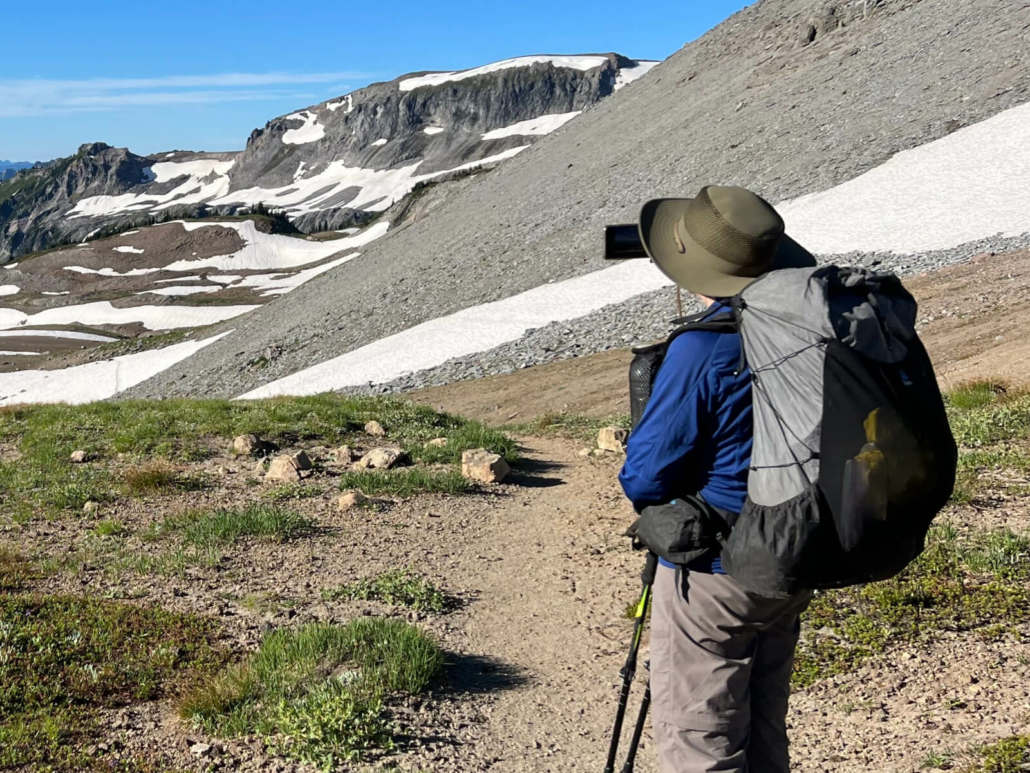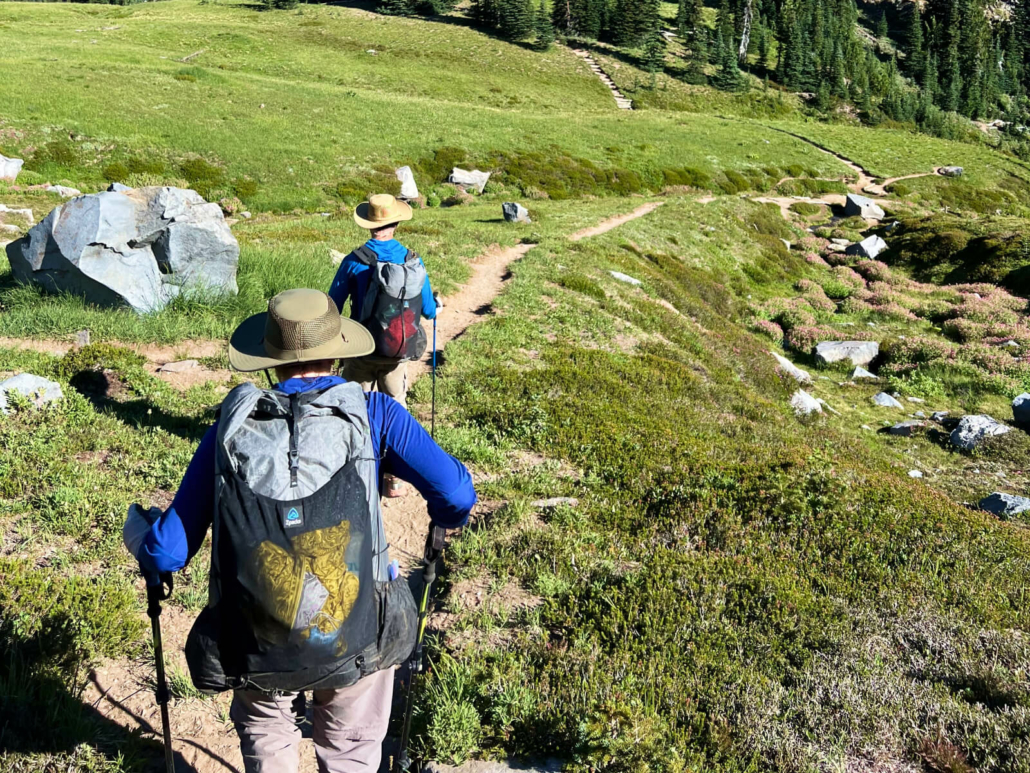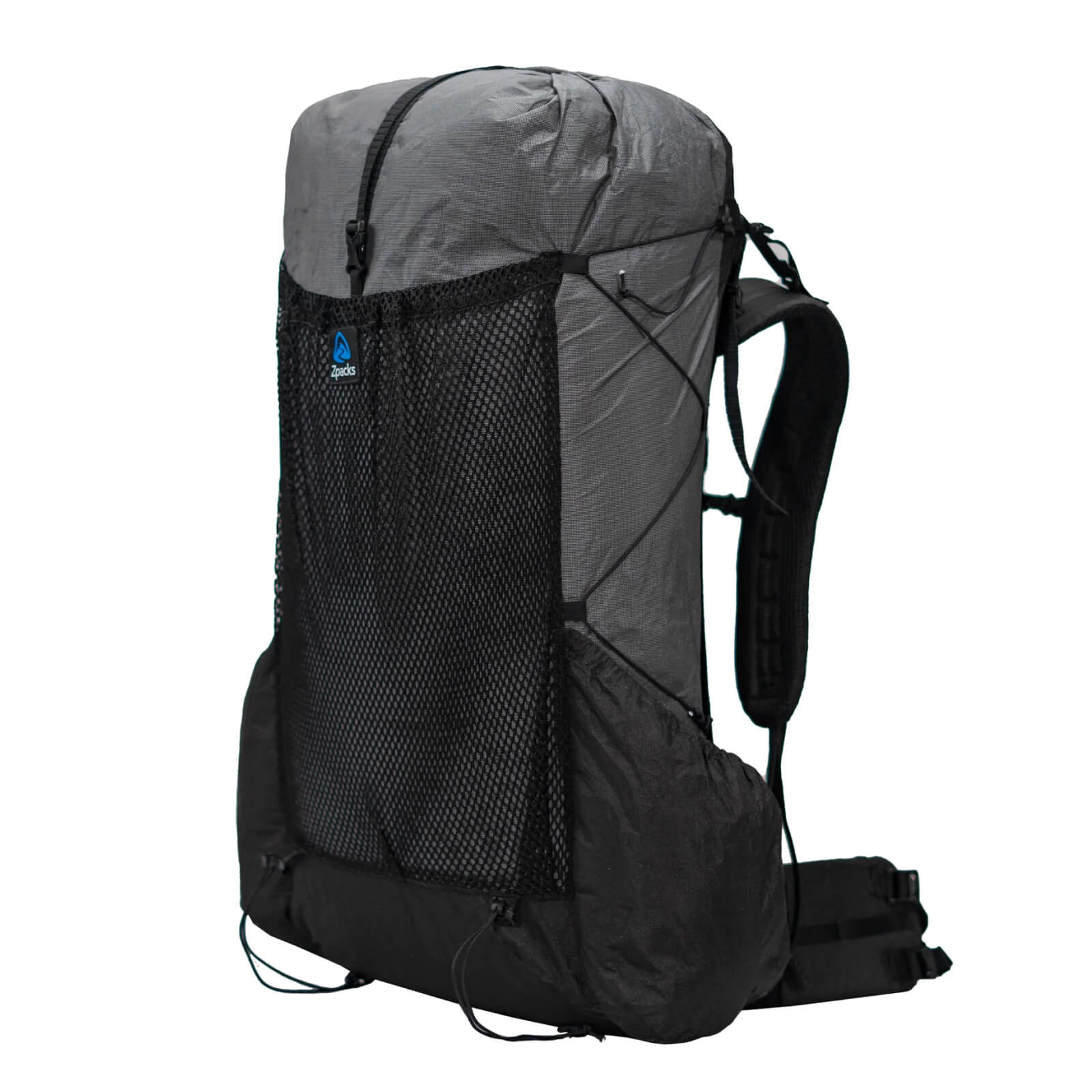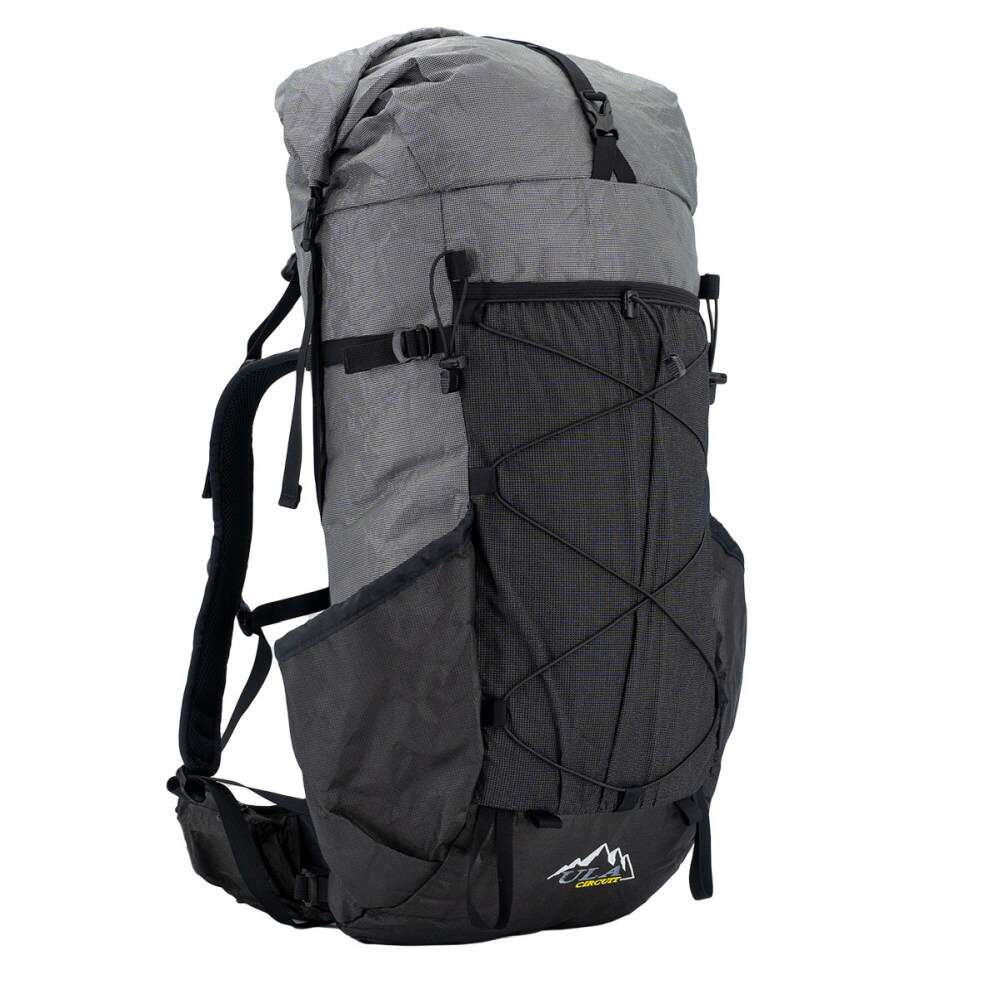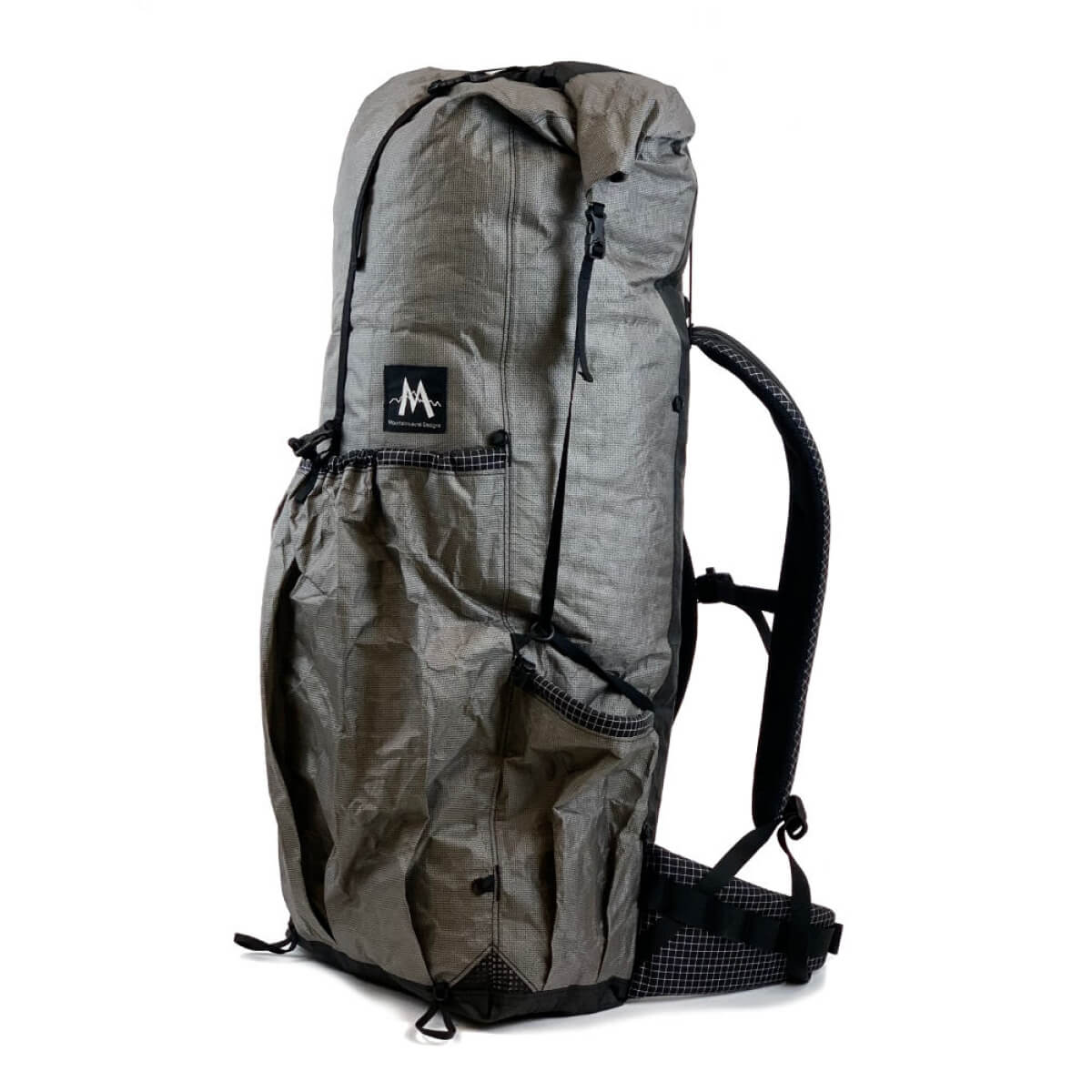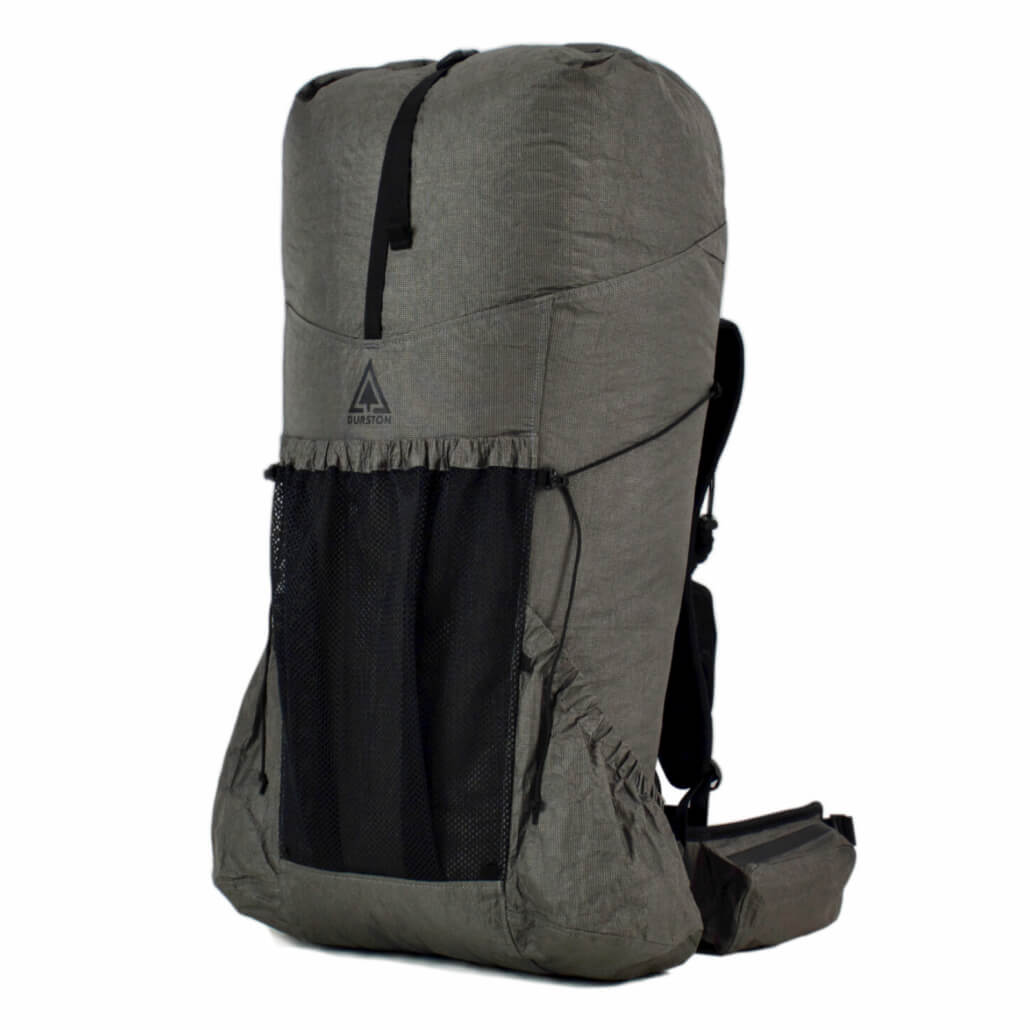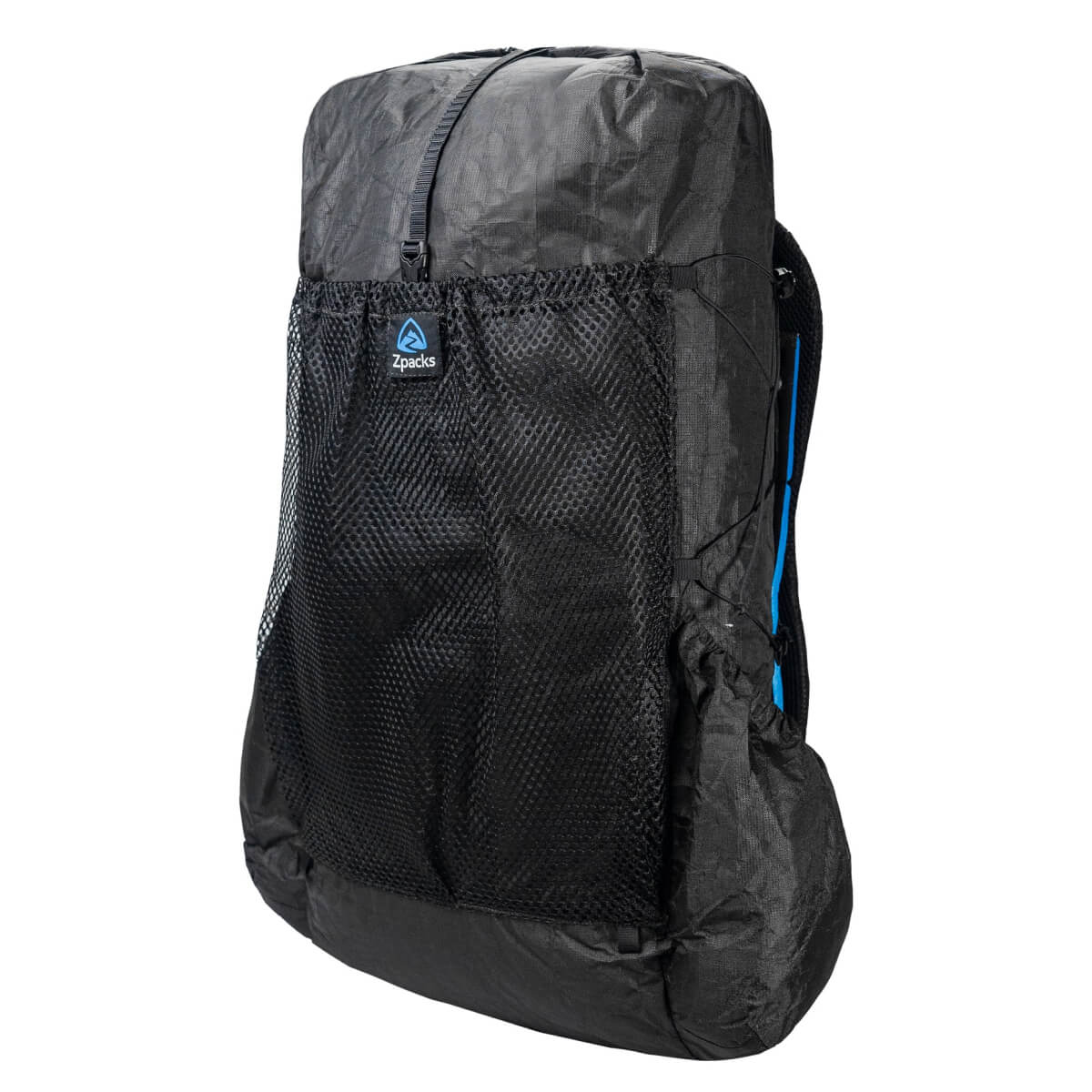What is Challenge ULTRA Fabric?
Last Updated: May 9, 2023
Step aside Dyneema, Challenge ULTRA is here
There’s been a lot of hype recently surrounding Challenge ULTRA Fabric, its superiority to Dyneema and nylon, and its use in ultralight backpacks. By now you have likely seen one of these distinct, black or gray packs on the trail. Most of the cottage ultralight industry seems to be adopting Challenge ULTRA™ Fabric, and we couldn’t be more excited.
This article explains everything you need to know about Challenge ULTRA™, a relatively new-to-market, best-in-class outdoor fabric, and what makes it the highest performing textile for backpacks, even better than Dyneema. We’ve been testing packs made of Challenge ULTRA™ for over a year now, and believe it’s the real deal.
Don’t miss our guides to the backpacking backpacks, fastpacking backpacks, and ultralight daypacks to see how the new Challenge ULTRA™ models stack up.
Overview of Challenge ULTRA Fabric
At its core, Challenge ULTRA™ is an extremely durable, lightweight, and waterproof textile available in many varieties. Ounce for ounce, Challenge Ultra is 15x stronger than steel, and more durable than Dyneema or ripstop nylon, all of which makes it the perfect material for backpacks.
Structurally speaking, it is an UHMWPE (ultra high molecular weight polyethylene) composite woven fabric, similar to Dyneema. To create Challenge Ultra™, UHMWPE fibers are woven with a high-tenacity polyester, and the entire textile is then laminated with an eco-friendly, waterproof and UV-resistant Challenge RUV™ Film. According to the manufacturer, “UHMWPE is created by a gel-spun extrusion process which draws out extremely long chains of polyethylene, aligned along a molecular backbone. This alignment effectively transfers load through the fiber for high modulus and strength.”
Who makes Challenge ULTRA™ fabric?
ULTRA™ fabric is manufactured by Challenge Outdoor, located at challenge-outdoor.com, a subsidiary brand of Challenge Sailcloth, based out of Connecticut, with roots in the maritime industry. The technologies in their ULTRA™ fabrics were originally designed to meet the needs of sailors by providing the strongest and longest lasting sailcloth material possible. In 2020, Challenge expanded into the outdoor industry, keenly aware that their textiles could be used as effectively in the backcountry as they could on the water.
Challenge ULTRA vs Dyneema vs Ripstop Nylon
Challenge provides the following information for comparison to other popular fabrics based on ASTM testing results. We’ve seen even more impressive stats elsewhere, but will defer to the manufacturer here.
- Compared to Dyneema®, Spectra® and other UHMWPE textiles of comparable denier, ULTRA is 20% lighter with 4X the abrasion resistance.
- Compared to 500d 8 oz sq/yd Cordura®, 3 oz sq/yd Challenge ULTRA 100d is 63% lighter and has nearly 2X the tear strength and abrasion resistance.
Should you upgrade to a Challenge ULTRA backpack?
The short answer is yes, definitely! And you can check out our favorite packs by jumping ahead to the round-up section.
If you are currently using a pack made of Robic Nylon, Cordura Nylon, or any similar ripstop nylon, we highly recommend upgrading as soon as you can afford it. You will increase durability and/or save significant weight, all while keeping your gear drier as Challenge ULTRA is waterproof and nylon is not.
If you already have a Dyneema pack, upgrading is less urgent, but still worth considering. While Challenge ULTRA is statistically superior to Dyneema in virtually every, we find that the delta in field performance is modest. Dyneema is still excellent, lightweight, waterproof hyper durable, and more than durable enough for most backpacking application. Therefor, the increased durability and weight savings offered by packs made with Challenge ULTRA over packs made with Dyneema are more of a bonus than a game changer.
Challenge Fabrics & Sustainability
As a textile manufacturer, Challenge is crushing it when it comes to sustainability. ECOPAK is “the world’s only composite fabric made with 100% recycled fiber and film.” Their lamination procedure uses non-toxic adhesives. Even their Challenge RUV Film backing for waterproofness and UV-resistance is 100% recycled.
Differences Between Challenge ULTRA, UltraX, UltraGrid, UltraStretch, UltraTNT, and ECOPAK
Challenge manufacturers a number of ULTRA™ and ULTRA™-adjacent fabrics relevant to hikers, backpackers, and the technical outdoor consumer, which we will outline below.
Challenge ULTRA™ 100D, 200D, 400D, 800D
These are their flagship woven textiles. Challenge ULTRA™ is an UHMWPE composite fabric laminated to a waterproof, UV-resistance film called Challenge RUV. It is available in four different deniers (100d, 200d, 400d, 800d) which correspond to four different fabric weights, (2.92, 3.5, 4.65, and 8.5 oz per square yard). Backpacks typically use 100D or 200D for the main body, and 200D or 400D in high abrasion zones like the bottom and sides.
Challenge UltraX™
New for 2023, UltraX™ is an improvement to the aforementioned ULTRA™ woven textile, described above. Ultra-X™ is a two-fold upgrade pertaining to the durability of Challenge RUV™ Film and how it is laminated to ULTRA fabric. Relative to original ULTRA™, Ultra-X™ increases the thickness of the RUV film from 0.5mm to 0.75mm, thus increasing waterproofness, UV-resistance, and abrasion resistance. It also adds an additional X-backing (hence the name) of ULTRA™ yarns immediately below the RUV film to reinforce against diagonal strain, reducing stresses on the bias that could otherwise lead to delamination with long term heavy use. Combined, these features add only additional .35 oz per sq yd, increase the overall strength, durability, and longevity of the RUV Film laminated to ULTRA™ fabric, and further improve upon an already excellent textile. We view it as a strict upgrade and expect all manufacturers to switch from ULTRA to UltraX over the course of this year.
Challenge UltraGrid™
This is Challenge’s take on classic ripstop nylon. UltraGrid™ is a 210d recycled nylon made from pre-consumer industrial waste, reinforced with a (ripstop) grid of 200d ULTRA™ UHMWPE. It is treated with C0 DWR, and finished with a waterproof PU backing. It is more eco and budget friendly than pure ULTRA™, but offers a lower performance as you would rather the entire textile be ULTRA, then just its ripstop grid.
Challenge ULTRA™ Stretch
UltraStretch™ is a 4-way stretch mesh woven with a blend of nylon, Lycra™, and ULTRA™, and finished with a C6 DWR. It is primarily used in exterior backpack pockets. It stretchy, durable, water resistant, and slightly breathable.
Challenge ULTRA™ TNT
UltraTNT™ is a new and relatively unexplored textile designed for use in Tents & Tarps. Unlike standard compsite weave ULTRA, this fabric is constructed by sandwiching a 3-way ripstop grid of ULTRA™ UHMWPE yarns in between two layers of polyethylene film. It weighs just 0.94 oz per square yard, is waterproof and never sags or stretches. We see this textile as having huge potential, and expect great things of it in the future.
Challenge ECOPAK™ (EPX, EPLX)
EcoPak™ is a durable and waterproof fabric constructed from 100% recycled materials, including 20 plastic water bottles per square yard. It is similar to ripstop nylon, but offers an improved performance. It absorbs 80% less moisture and has better UV resistance. ECOPAK is available in a wide array of fabric weights/deniers. The EPLX is differentiated from EPX in that the L refers to a waterproof/UV-resistant laminate film backing. In that sense, EPLX is a strict performance upgrade to EPX.
Challenge ULTRA Backpack Roundup
There are many excellent backpacks currently constructed with high performance Challenge ULTRA fabric. What follows is a round up of what we’ve been testing and/or have been impressed by. This is not an exhaustive list of all Challenge Ultra packs. Read full length reviews in our guides to compare these to rest of the best backpacking packs and the best day hiking packs.
You make Adventure Alan & Co possible. When purchasing through links on our site, we may earn an affiliate commission at no additional cost to you. Here’s why you can trust us.
Zpacks Arc Haul Ultra 60L Backpack
Zpacks Arc Haul Ultra 60L Backpack
21.9 oz | $399
The magic of the Zpacks Arc Haul Ultra 60L Backpack is that you get a full external frame backpack at a super ultralight weight without any sacrifices other than the price tag. The pack is designed with Challenge Ultra 200 fabric, so it’s waterproof and has a better durability-to-weight ratio than Dyneema or Robic nylon.
We commend the Arc Haul’s old school full-external-arched-frame design for an incredible load transfer from shoulder to hips. While we feel it’s perfectly durable enough for typical on-trail hiking, it’s true ultralight backpacking gear and must be handled respectfully
ULA Equipment ULTRA Circuit
33.8 oz | $380
Thanks to Challenge UltraX fabric, the most popular pack on the PCT, ULA Equipment Ultra Circuit, it is now lighter weight, more water-resistant, and more durable than ever before. It meets or exceeds all of our preposterously high backpack standards in every regard. The ULTRA Circuit has exceptional weight transfer thanks to its workhorse frame comprised of an aluminum stay plus a carbon fiber and plastic U-shaped suspension hoop. The full suite of massive, best-in-class external pockets grants easy access to gear, including the expansive UltraStretch Mesh front crisscrossed with shock cords. Its decked out with all of the right features, including superb load lifters, easy-to-use buckles, dual reverse pull hip belt adjusters, and a Y-strap top. Read more in our extremely positive, full-length ULA Ultra Circuit Review.
Mountain Laurel Designs Exodus 55L Backpack
18 oz | $325
Tough, durable, fully-featured, nearly waterproof, and weighing only 18 ounces, the Mountain Laurel Designs Exodus 55L is an ultralight backpack to behold. This frameless beast is Alan’s go-to whenever weight savings are critical, and he’s even carried it (comfortably) with seven days of food while guiding. Constructed with waterproof and tougher than nails Challenge ULTRA 100/200 fabric, this is a high tech, top performing frameless option for those with dialed in ultralight kits.
Durston Kakwa 55
29 oz | $260
The Durston Kakwa 55 is an incredibly well-designed, comfortable, ultralight backpack decked out with user friendly features and constructed with best-in-class, waterproof, hyper-durable Challenge Ultra 200 fabric. Thanks to hollow aluminum framing combined with load lifters, this pack delivers an incredible weight transfer and carrying capacity. It’s a contender for best pack on the market, and smashes the competition in terms of value for just $260. Its biggest issue is availability – the Kakwa 55 won’t be back in stock until fall.
Zpacks Nero Ultra 38 Backpack
Zpacks Nero Ultra 38L Backpack
10.2 | $249
Zpacks Nero Ultra 38 is the perfect vessel for carrying a super ultralight kit. Constructed with waterproof and tough-as-nails Challenge Ultra fabric, the base pack is frameless, hipbelt-less, and weighs only 10.2 oz when fully stripped down. Yet it is still very comfortable and well-featured with 2.75″ wide shoulder straps, a foam sit pad back panel, and a full-sized set of side and rear external pockets. This fastpacking pack has proven very effective for us in managing base weights under ten pounds.
Conclusion
We’ve been testing backpacks made of Challenge Ultra fabric for over a year now, and can confirm that the hype is real. This is the perfect textile for backpacking packs. We’ve yet to tear, rip, or damage it at all, the fabric has held up perfectly. It is statistically superior to Dyneema, and is far, far superior to nylons. We hope you found this article helpful. If you have any questions, please drop them in the comments. Happy trails!

